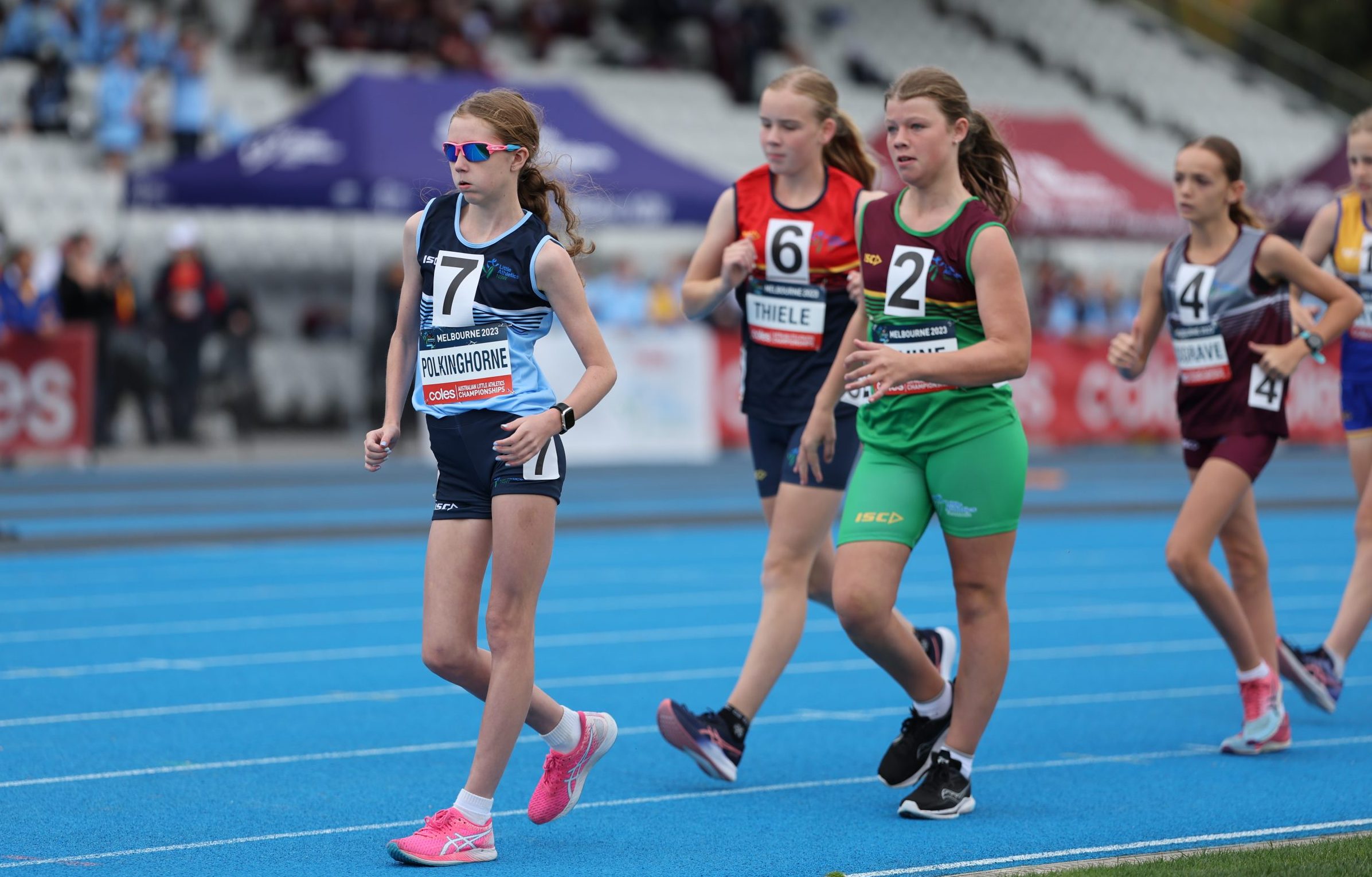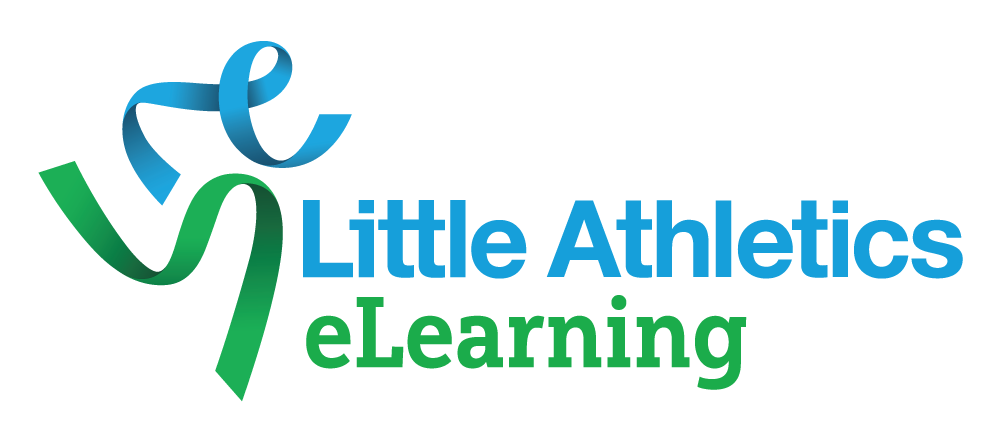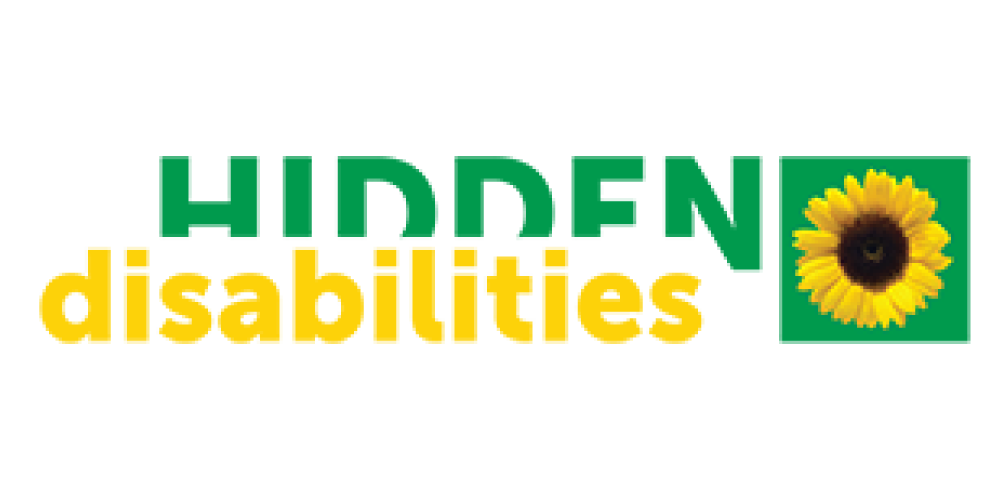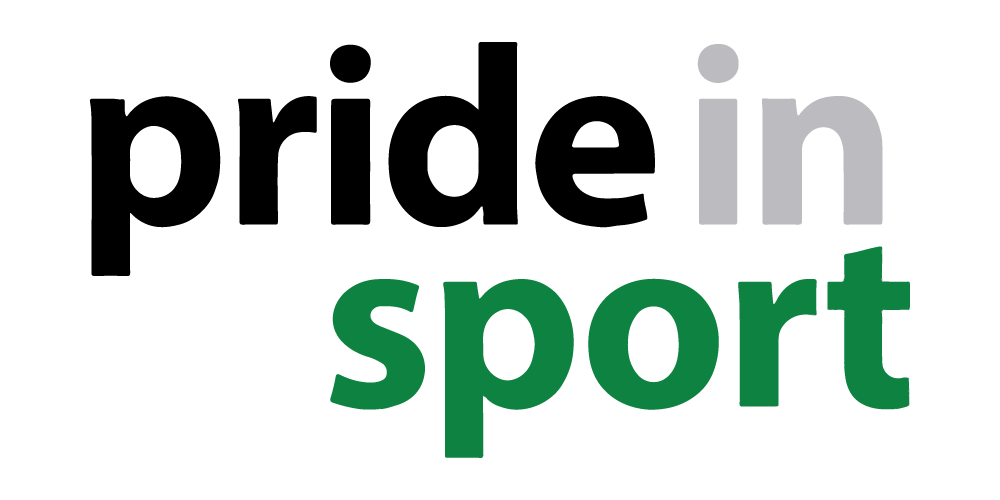Racewalk

Race Walking Skills
Technique
- Walk in a forward motion toward the finish line.
- Double support phase.
- Drive off a straight/slightly bent rear leg.
- Hip of the forward leg is pushed forward to a mid-line and lands over the heel. The knee of this leg must straighten at heel contact and remain straight until past the vertical.
- Elbows kept at 90 degree angle. The forward elbow drives over the opposite heel and hip.
- The back-ward elbow drive, the fist stops just behind the fat pad of the same hip.
- Half recovery phase
- Posture upright, shoulders relaxed.
- No flexion at hips (i.e a forward torso).
- Arms always carried at 90 degree elbow angle.
- Knee angle greater than 90 degrees for recovery (i.e 100 – 120 degrees).
- Recovery foot relaxed, toes down.
- Single leg phase.
- Emphasis here on straight support, shoulder/hip/knee/leg all in a line.
- Tail of spine still pointing to ground between legs (i.e. eliminating pelvic tilt).
- Recovery foot relaxed, toes down.
- Stance (opposite) hip at its highest level.
- Recovery hip low and driving forward to the midline (not laterally)
- Three quarter recovery phase.
- Posture, slight forward lean from rear ankle to shoulder (no bend at hips).
- Drive from rear leg commencing.
- Front hip at its lowest position, midline.
- Use of this forward hip drive to pull the recovery leg through (not a knee lift).
- Front knee relaxed, toes start to pull upwards.
- Double support phase.
- Front foot contact on rear of heel, toes up, leg straight.
- Drive from back leg completed.
- Front arm to centre of breastbone and not across midline.
- Rear elbow drive, hand no further back then fat pad on hip.
Race Technique
- Official or Age Manager will show athletes to their lanes and the starting line.
- When race starter says “On your Marks”.
- Move up to stand behind the line.
- Point feet in direction of walk.
- Front leg forward and straight (behind line).
- Back leg slightly bent and weight on ball of foot.
- Listen or look for the next instruction.
- Race starter says “go”.
- Listen for the bang of the gun and walk.
Or - Look for the visual sign of arm lowering or light flash and walk.
- Listen for the bang of the gun and walk.
- Race.
- Merge towards the inside lane when told to.
- Keep moving until you are past the end line.
Modification Options
- Reduce the distance.
- Allow for knee bend.
- Assistive Technology (equipment) is used to support balance so the athlete can compete.
- You can allow the athlete to use their everyday equipment. This is Assistive Technology that they use in their everyday life, not for a short-term injury.
- Crutches.
- Walking frame.
- Wheelchair.
- Orthotics.
- Prosthetics.
- Specialised Assistive Technology for athletics can be used.
- Frame Runner.
- Race Wheelchair.
- Gloves.
- Athletes may need a helper adult (for example parent or support worker or therapist) to use the equipment safely and effectively, especially when learning – ask the athlete what they need.
- Athletes can use a wheelchair by doing single pushes.
- You can allow the athlete to use their everyday equipment. This is Assistive Technology that they use in their everyday life, not for a short-term injury.
- Starter gun.
- Visual signal required for athletes with sensitivity to noise. They may also choose to wear ear muffs or start on the opposite side to the gun.
- Visual or touch signal required for deaf and hard of hearing athletes.
- Hand or flag raised on “get set” and lowered on “go”.
- Athlete in lane 1 or 8 with the person signaling to stand to the same side.
- Gently tap the shoulder on “go”. Stand out of the way of their start.
- Audible signal required for athletes with vision impairment.
- For blind and low vision athletes, use a guide athlete. See the sensory page for more information.
- Use bright markers to show where to run.





